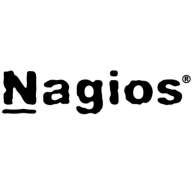

Nagios XI and InfluxDB compete in the IT monitoring and data management category. InfluxDB holds an advantage with its specialized focus on time-series data, offering enhanced performance for such needs.
Features: Nagios XI is an extensible open-source monitoring tool with extensive service monitoring capabilities and supports plugin and scripting customization. In contrast, InfluxDB specializes in time-series data with features like data aggregation and integration with Grafana, enabling fast queries and efficient data handling.
Room for Improvement: Nagios XI faces scalability challenges across data centers and has no unified configuration interface, complicating user setups. InfluxDB could improve in managing high-cardinality data and needs enhancements in clustering and user interface design.
Ease of Deployment and Customer Service: Nagios XI supports on-premises and private clouds. It has mixed reviews regarding support quality, leading users to rely on the community. InfluxDB offers similar deployment options, with variable experiences in vendor support, also pushing users towards community resources.
Pricing and ROI: Nagios XI offers a free open-source version, though enterprise editions involve higher fees. Its ROI is evident in monitoring efficiency. InfluxDB, also open-source, provides cost advantages but requires investment for scaling, yet returns are notable in time-series data handling.


InfluxDB is open-source software that helps developers and enterprises alike to collect, store, process, and visualize time series data and to build next-generation applications. InfluxDB provides monitoring and insight on IoT, application, system, container, and infrastructure quickly and easily without complexities or compromises in scale, speed, or productivity.
InfluxDB has become a popular insight system for unified metrics and events enabling the most demanding SLAs. InfluxDB is used in just about every type of industry across a wide range of use cases, including network monitoring, IoT monitoring, industrial IoT, and infrastructure and application monitoring.
InfluxDB offers its users:
InfluxDB Benefits
There are several benefits to using InfluxDB . Some of the biggest advantages the solution offers include:
Reviews from Real Users
InfluxDB stands out among its competitors for a number of reasons. Two major ones are its flexible integration options and its data aggregation feature.
Shalauddin Ahamad S., a software engineer at a tech services company, notes, “The most valuable features are aggregating the data and the integration with Grafana for monitoring.”
Nagios XI provides monitoring of all mission-critical infrastructure components, including applications, services, operating systems, network protocols, systems metrics, and network infrastructure. Third-party add-ons provide tools for monitoring virtually all in-house and external applications, services, and systems.
Nagios XI uses a powerful Core 4 monitoring engine that provides users with the highest levels of server monitoring performance. This high degree of performance enables nearly limitless scalability and monitoring powers.
With Nagios XI, stakeholders can check up on their infrastructure status using the role-based web interface. Sophisticated dashboards enable access to monitoring information and third-party data. Administrators can easily set up permissions so users can only access the infrastructure they are authorized to view.
Nagios XI Benefits and Features
Some of the benefits and top features of using Nagios XI include:
Reviews from Real Users
Nagios XI stands out among its competitors for a number of reasons. Several major ones are its integration options and monitoring abilities, as well as its alerting features.
David P., a senior DevOps engineer at EML Payments Ltd, writes, “We use Nagios as a network discovery tool. We use Nagios to maintain our uptime statistics and to monitor our services. It has allowed us to be much more sophisticated in our monitoring and alerting.”
An IT-OSS manager at a comms service provider notes, “Nagios XI has a custom API feature, and we can expose custom APIs for our integration. This is a great feature.”
We monitor all IT Infrastructure Monitoring reviews to prevent fraudulent reviews and keep review quality high. We do not post reviews by company employees or direct competitors. We validate each review for authenticity via cross-reference with LinkedIn, and personal follow-up with the reviewer when necessary.